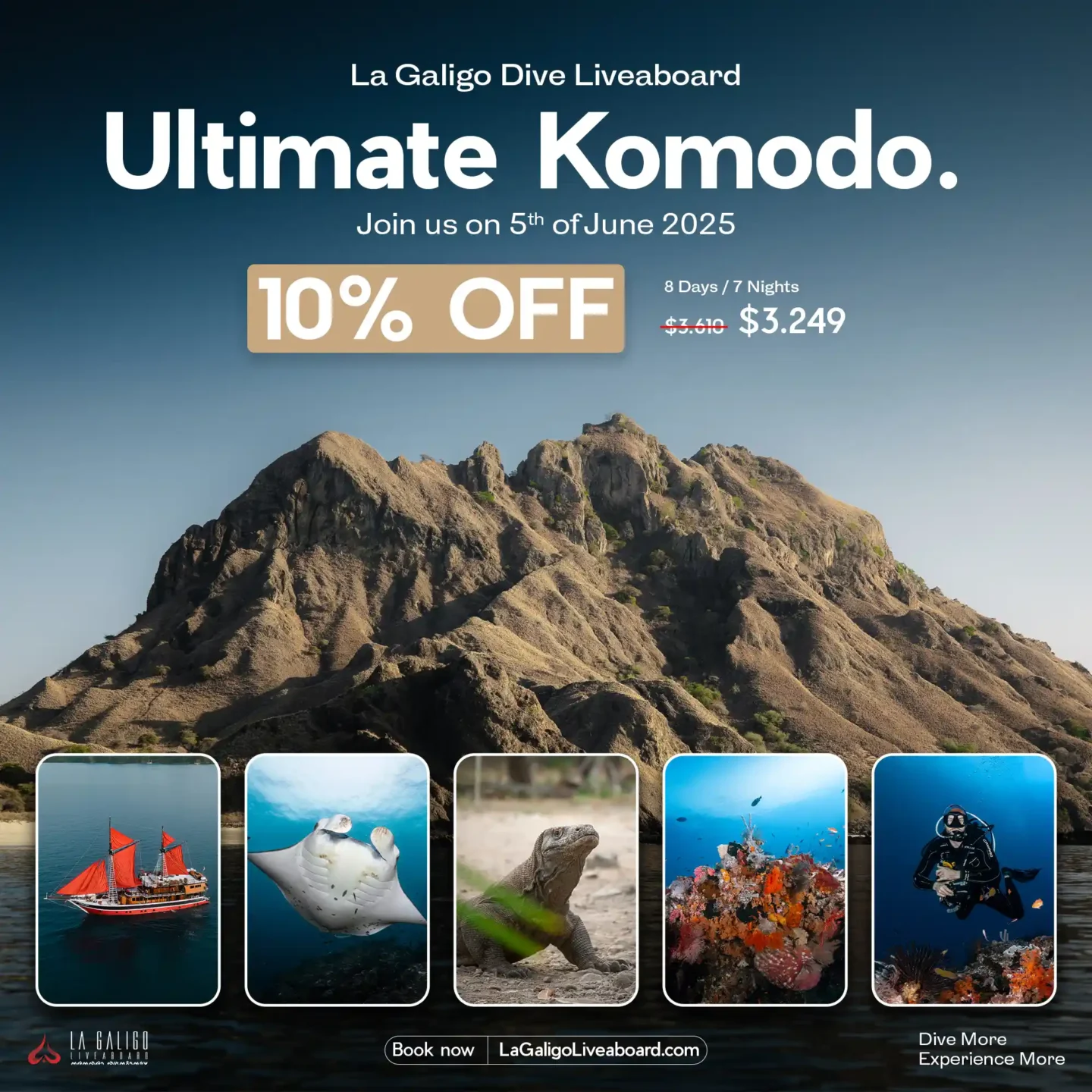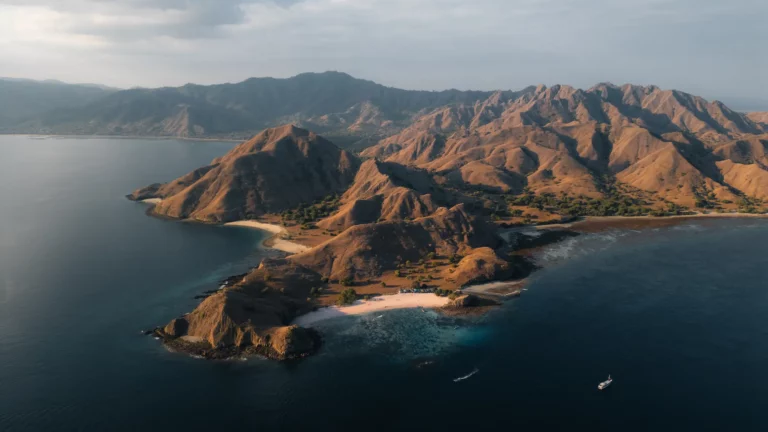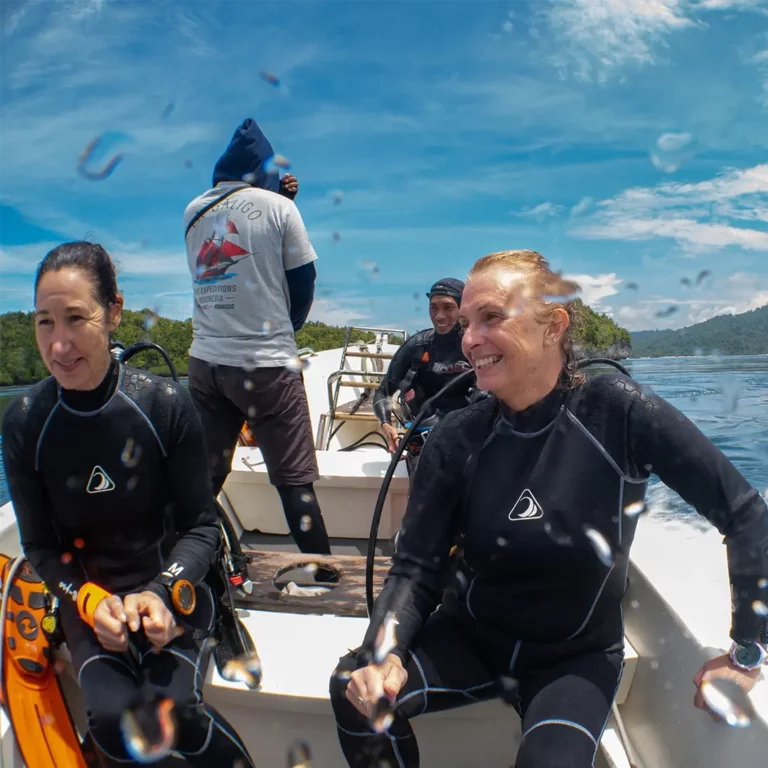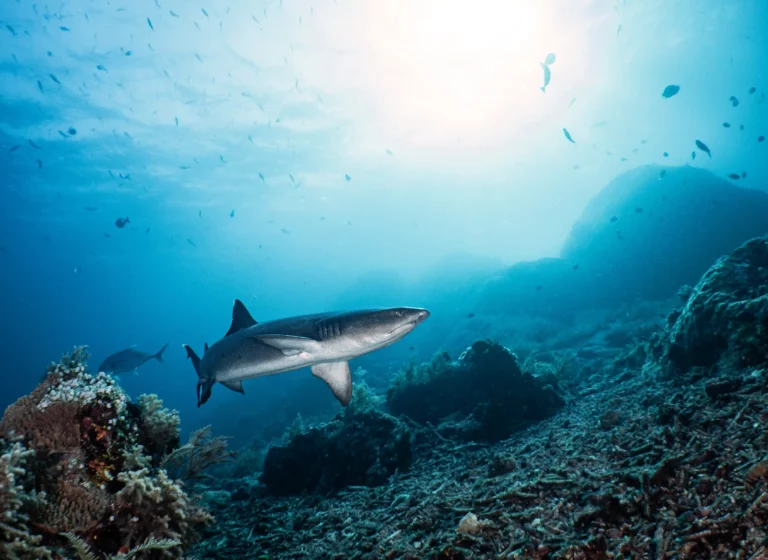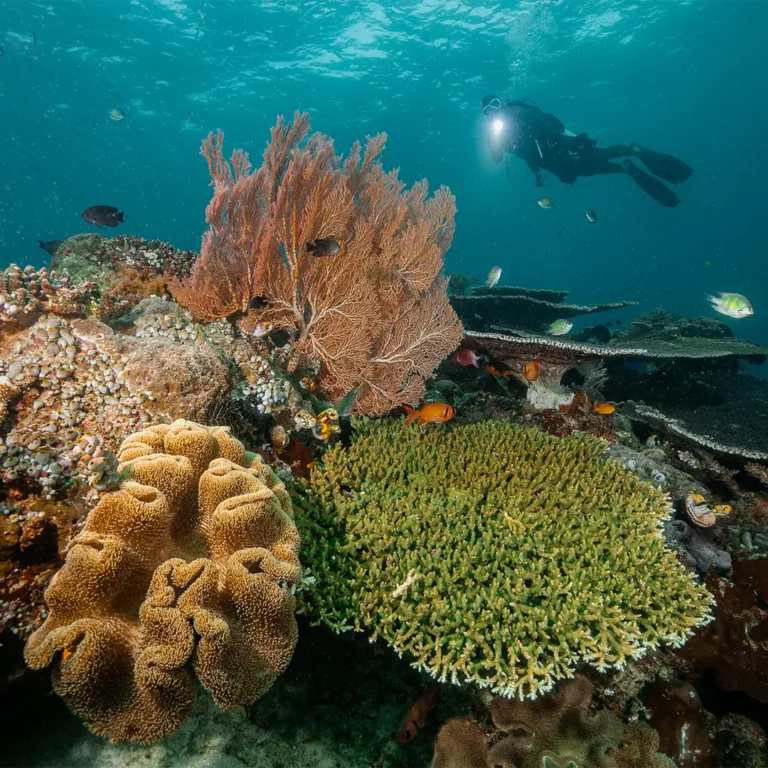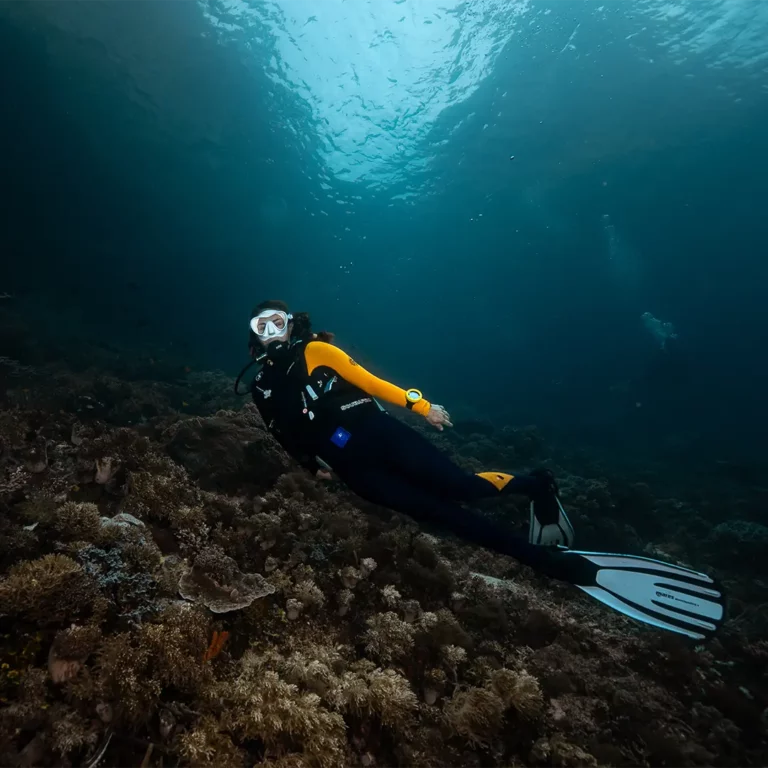Most people visit Komodo for manta rays and big fish but miss what’s hiding in plain sight. Small creatures like nudibranchs, pygmy seahorses, and ghost pipefish often go unnoticed by divers focused on the big stuff.
That’s a missed opportunity.
Komodo is one of the best places on Earth for macro diving. With the right guide and a slower pace, you’ll discover an entirely different world, right under your nose.
Table of Contents
- Why Komodo is Great for Macro Diving
- Top Macro Dive Sites in Komodo National Park
- Iconic Macro Species in Komodo
- Ready to Explore Komodo’s Macro Life?
Why Komodo is Great for Macro Diving
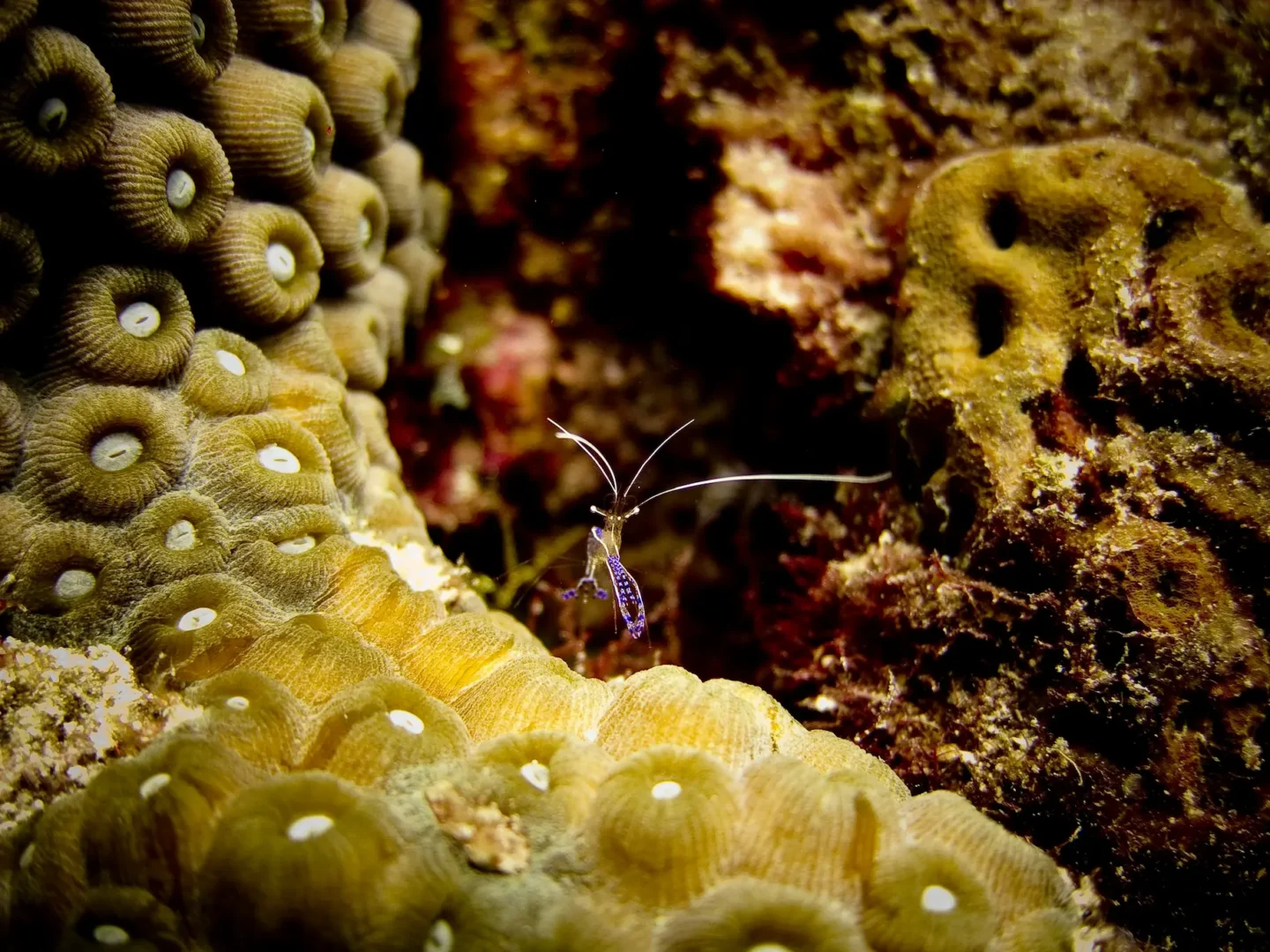
Komodo isn’t just about strong currents and big fish, it’s a haven for small, strange, and rarely seen creatures. The reason? Location and variety.
Komodo sits where the Pacific and Indian Oceans meet. This creates strong currents that bring nutrients into the park, feeding everything from coral to critters. More food means more life, and that includes the tiny stuff: frogfish, flamboyant cuttlefish, pipefish, and hundreds of nudibranch species.
The underwater terrain is just as diverse. You’ll find volcanic black sand, rubble slopes, coral gardens, seagrass beds, and even sponges the size of small cars. Each habitat supports different species, giving macro divers a rotating cast of rare and unusual finds. Some sites are calm and shallow, perfect for slow exploration and photography. Others are slightly more technical, but worth it for their variety.
Temperature and visibility shift throughout the year, but macro life is present year-round. You don’t need perfect conditions to spot a blue-ringed octopus or a pair of mating mandarin fish: just patience and a good eye.
Top Macro Dive Sites in Komodo National Park
Wainilu
One of the best-known muck diving sites in Komodo, Wainilu has black sand, rubble, and calm conditions—ideal for spotting small critters. Expect nudibranchs, ghost pipefish, frogfish, and the occasional mandarin fish. It’s a great spot for night dives and slow photography sessions.
Siaba Besar
A shallow, protected site with little to no current. Often used for training dives, but it’s a favorite for macro photographers too. Look out for pygmy seahorses clinging to sea fans, colorful nudibranchs, and even baby cuttlefish hiding in plain sight.
Cannibal Rock
Located in the southern part of the park, this seamount is packed with marine life. Stronger currents bring nutrients that support a wide range of creatures. Notable sightings include pygmy seahorses, rare nudibranchs, ladybugs, and the occasional rhinopias. Best dived during slack tide.
Sangeang Island
Although just outside the park boundary, Sangeang is a popular addition to Komodo itineraries. The volcanic sand here makes tiny creatures pop against the dark background. You might see bobtail squids, hairy frogfish, and mimic octopus. It’s a favorite for experienced macro hunters.
Tatawa Besar
Though better known for drift dives and coral coverage, Tatawa Besar also has pockets of macro life, especially along the reef edges and sandy slopes. Keep an eye out for leaf scorpionfish, tiny shrimp, and flatworms hiding in plain sight. Conditions can be current-heavy, so it’s best explored during slack tide or with an experienced guide.
Iconic Macro Species in Komodo
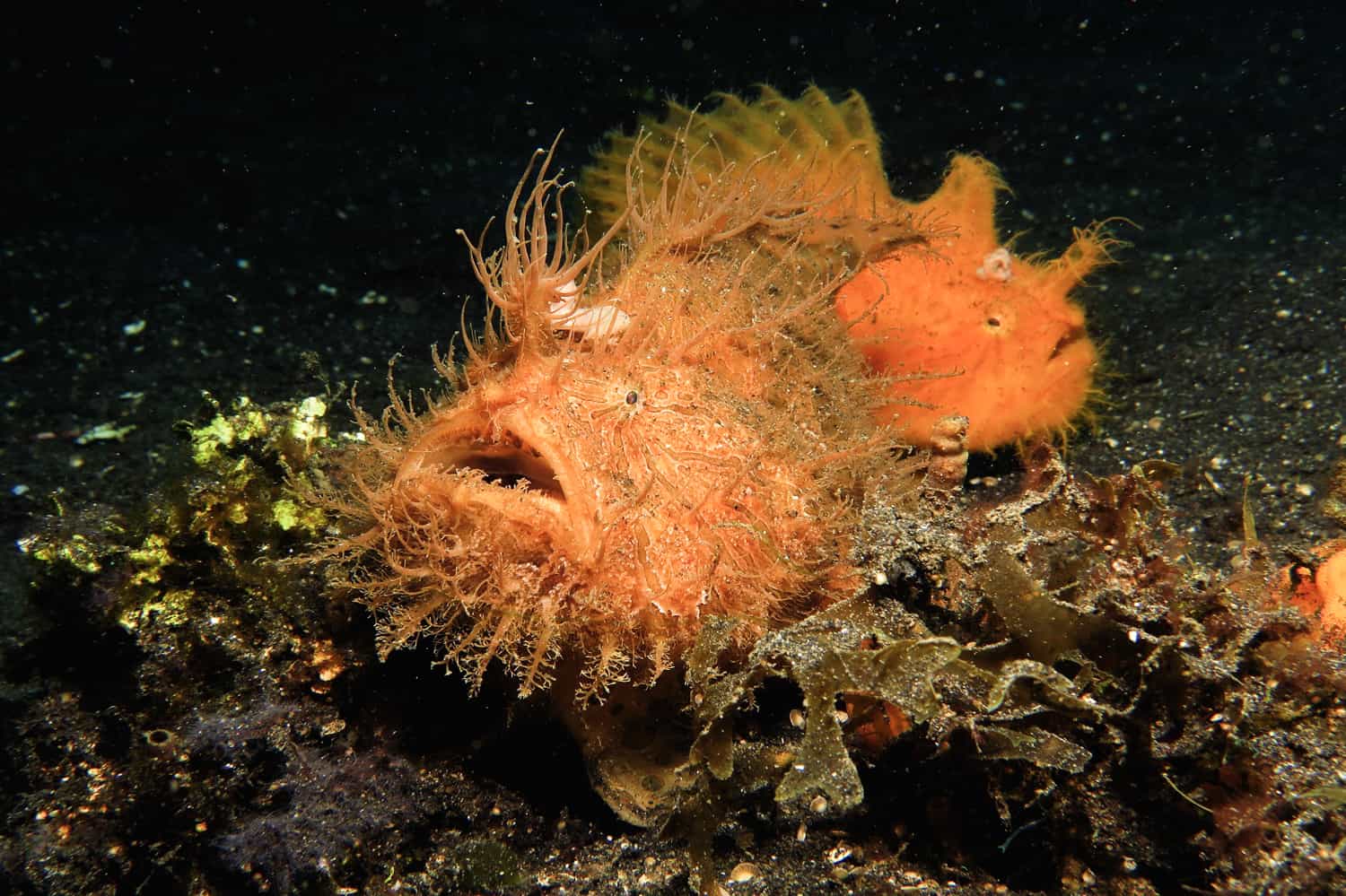
Komodo is packed with tiny creatures that are just as fascinating as the big stuff, if not more. These species are small, often strange-looking, and sometimes hard to spot, but they’re what make macro diving here so rewarding.
Pygmy Seahorse & Nudibranch
One of the stars of the show is the pygmy seahorse. No bigger than a grain of rice, it blends almost perfectly into the sea fan it calls home. You’ll need a sharp eye, or a good guide, to find it. Then there’s the nudibranch, a colorful sea slug with endless patterns and shapes. Komodo is home to dozens of varieties, and new ones are still being discovered.
Frogfish
Frogfish are another favorite. These oddball predators come in all sizes and colors, using a built-in lure to ambush prey. You’ll find them camouflaged among sponges and rubble, sometimes just a few feet from where you started.
Ghost Pipefish
Ghost pipefish and ornate pipefish are also common, drifting near soft corals and feather stars, almost invisible unless you know where to look.
Other highlights
Other highlights include blue-ringed octopus, flamboyant cuttlefish, and the elusive wonderpus—all small cephalopods with bold behaviors and vivid colors. Night dives open the door to even more sightings, like bobtail squid and rare shrimp species.
Ready to Explore Komodo’s Macro Life?
If you’re a macro lover or underwater photographer, Komodo is the best place to go! With us, you’ll dive with our experienced guides who know where the critters hide and give you the time and space to capture them!
👉 Check departures
👉 Check itineraries
👉 Got a question? talk to us
👉 Send us an enquiry

